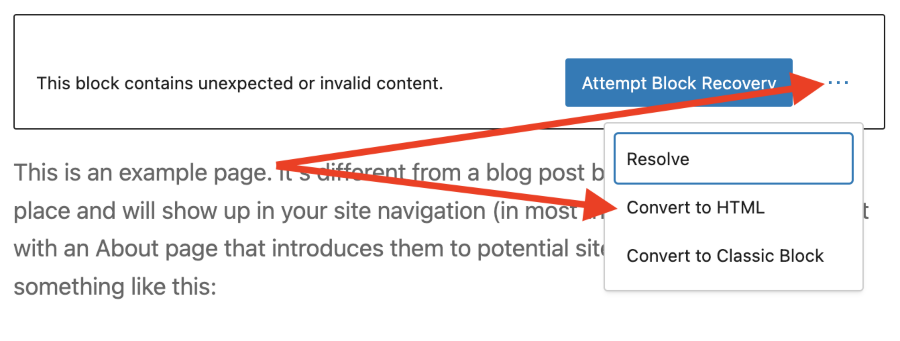Still buggy and unintuitive
-
I’ve been developing a new website over the past two days using Gutenberg — just the bare bones to start with. Here’s a list of issues I’ve encountered so far:
- By far the most annoying feature: any and all attempts I make to edit the html of the blocks (eg. to change the sizes of fonts or the min-height attribute of background images) result in the block ‘breaking’ and my being shut out of further editing. The post/page editor then presents me with the option to ‘Attempt Block Recovery’, which removes all of my editing and restores the block to the default size/font/font-size/colour. This is made much worse by the fact that all the default designs are awful — the banners and combined text/images are enormous and ugly. Trying to add a simple banner image with readable text over the top requires a lot of direct adjustments — which are then immediately rejected by the editor.
- Contextual menus are inconsistent in their layout and options. It’s completely unclear to me why sometimes I can edit the html of a block while at other times that option simply isn’t there. Same with options to change the style of text, use a block as a template part or ‘Reuseable’, and more besides.
- It’s almost impossible to add a block in between two existing blocks — the contextual cue (a ‘+’ sign) just doesn’t appear half the time. Instead, I’ve found I have to add new blocks at the bottom and then move them up the page step by step.
- What the page/post looks like in the editor is a very poor indication of what it will look like once published.
- Editing one template under ‘Appearance’ will sometimes change the appearance of a different template. At one point I was stuck with two logo headers appearing on my front page. If I deleted one, no logo header at all would appear on single blog posts. If I added one back to the single blog post page, it would add a second one to my front page.
- Similarly, on any page with a large number of blocks which are duplicated (eg. when you want to enclose each text block within a div using code blocks), Gutenberg will add its own duplications seemingly at random.
- Normal javascript doesn’t work, even with the WPCode snippet plug-in. Each piece of script has to be edited, eg. so that you use ‘jQuery’ in place of $. (I’m guessing this is a more general WordPress issue rather than a Gutenberg-specific one, but the same code still works on my older WordPress sites).
- The pop-up site navigation menu, by default, flows outside the screen on mobiles. Even after overwriting huge chunks of the stylesheet I can’t get it into the centre, or find any way to make it look neat.
- I can’t easily control the spacing on the website, even by overwriting the theme stylesheet with my own because Gutenberg blocks add margins in as part of the element (eg. “margin-top: var(–wp–preset–spacing–50);”). The only workaround I can figure out is to customise other blocks with negative margins.
I’ve spent an inordinate amount of time asking myself “What the hell were they thinking?” Most of the above problems aren’t bugs — they’re features of Gutenberg designed to prevent amateur coders making adjustments.
The main thing I want is to be able to easily edit all the features of every block I add, either with a comprehensive menu (including font changes, margins, dimensions etc) or by being able to edit the html without blocks declaring themselves ‘broken’. It’s bizarre that Gutenberg seems determined to fight me every step of the way on this.
- The topic ‘Still buggy and unintuitive’ is closed to new replies.
